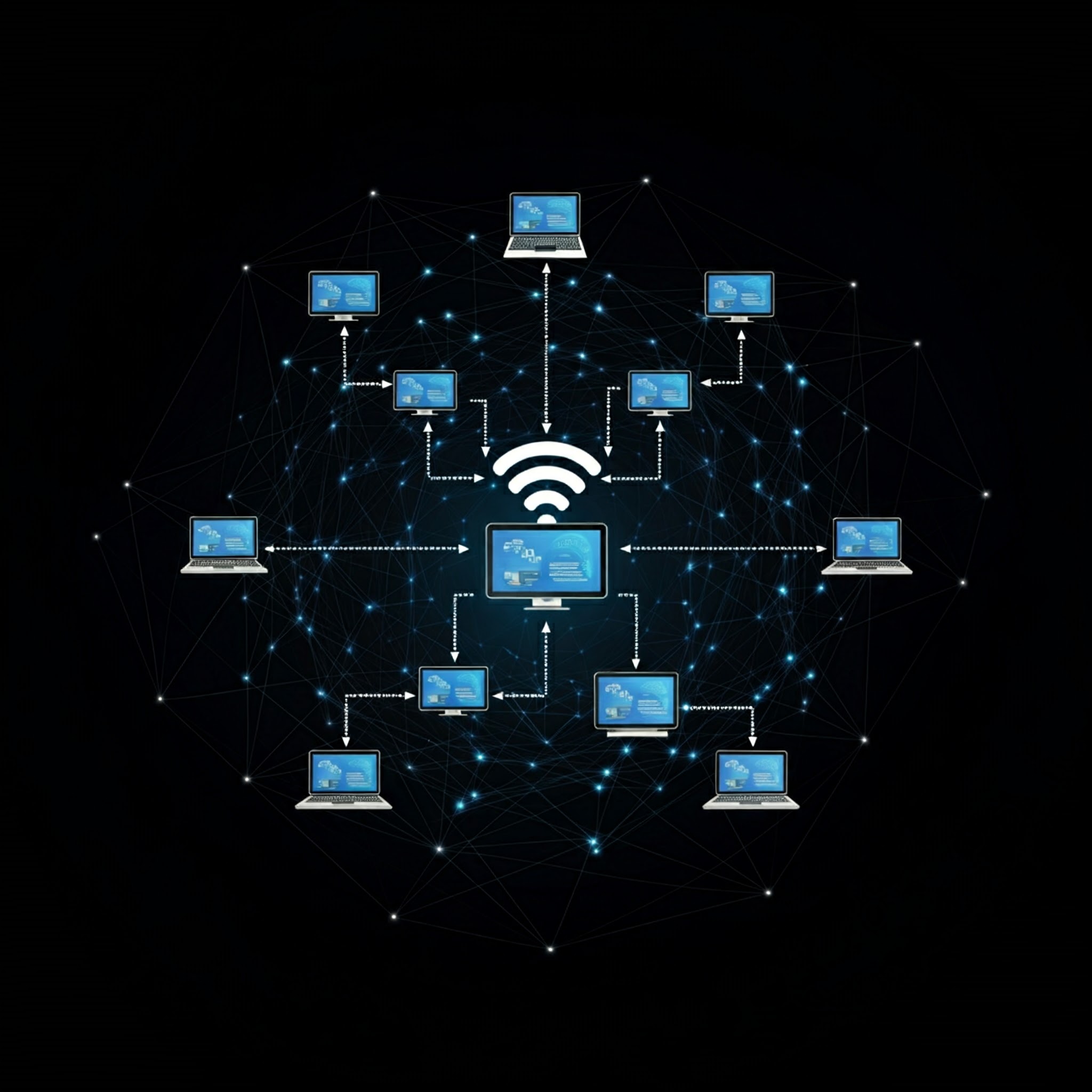Ethernet
Ethernet (pronounced “either net”) is a computer network technology used in different area networks like LAN, MAN, and WAN. Ethernet connects computers with cables so they can share information. Within each main branch of the network, “Ethernet” can connect up to 1,024 personal computers and workstations.
Ethernet provides services on the Physical (Layer 1) and Data Link Layer (Layer 2) of the OSI reference model. The Data Link Layer is further divided into two sublayers that are Logical Link Control (LLC) and Media Access Control (MAC). These sublayers can be used to establish transmission paths and format data before transmitting on the same network segment.
Systems that use Ethernet communication divide their data into packets, also known as frames. These frames contain source and destination addresses, a mechanism used to detect errors in the data, and retransmission requests.
History of Ethernet
Ethernet was developed over several years in the early 1970s by group researchers within Xerox Palo Alto Research Center (Xerox PARC), including Robert Metcalfe, who later founded 3Com company. The goal of the research project was to connect networked computers and laser printers. Xerox Corporation filed a patent on this technology in late 1977. In 1979, Digital Equipment Corporation (DEC), Intel, and Xerox combined to improve Ethernet and published the first standard in 1980: Ethernet Blue Book, sometimes called TEN (after the initials of the three companies).
According to the IEEE, this technology became standard in 1983 with the birth of 802.3. The format of DIX Ethernet packets is slightly different from the 802.3 Ethernet packets, but both can coexist on the same network. The invention of single-chip Ethernet controllers has made Ethernet cards very cheap, and many modern PCs have it built into the motherboard.
Types of Ethernet Network
The maximum data rate of the original Ethernet technology is 10 megabits per second (Mbps), but second-generation fast Ethernet carries 100 Mbps, and the latest version called Gigabit Ethernet works at 1000 Mbps. Ethernet networks can be classified into 3 types:
| Ethernet Type | Data Rate | Cable Type |
|---|---|---|
| Fast Ethernet | 100 Mbps | Twisted pair, fiber optic |
| Gigabit Ethernet | 1000 Mbps | Twisted pair, fiber optic |
| 10 Gigabit Ethernet | 10 Gbps | Twisted pair, fiber optic |
Fast Ethernet
This type of Ethernet transfers data at a rate of 100 Mbps. Fast Ethernet makes use of twisted pair cable or fiber optic cable for communication. There are three types of fast Ethernet:
- 100BASE-TX
- 100BASE-FX
- 100BASE-T4
Gigabit Ethernet
This type of Ethernet network transfers data at a rate of 1000 Mbps. Gigabit Ethernet also makes use of twisted pair cable or fiber optic cable. 48 bits are used for addressing in Gigabit Ethernet. Nowadays, Gigabit Ethernet is very popular. The latest Gigabit Ethernet is a 10 Gigabit Ethernet, which can transfer data at a rate of 10 Gbps.
Switch Ethernet
Switched Ethernet involves adding switches so that each workstation can have its own dedicated 10 Mbps connection rather than sharing the medium, which can improve network throughput. It supports different data transfer rates like 10Mbps to 100Mbps for fast Ethernet and 1000Mbps to 10 Gbps for the latest Ethernet. This type of Ethernet makes use of star topology.
Suggested Image: Diagram showing the types of Ethernet networks and their configurations.
Wired Ethernet
Initially, Ethernet was designed to run over coaxial cables, twisted pair cables, and fiber optic cables. In a wired Ethernet network, devices are connected with the help of a fiber optic cable which connects the devices within a distance of 10km. A computer network interface card (NIC) is installed in each computer. A unique address is given to each connected computer. For sharing data and resources like printers, computers, and other machines, Ethernet networking is used as it establishes a communication system.
Ethernet is a shared medium network technology, where all workstations are connected to the same cable and must connect to send signals over it. The algorithm used to resolve collisions is called CSMA/CD, which works by forcing both workstations to back off for random intervals before trying again.
Advantages of Using Wired Ethernet Network
- Very reliable
- Use of firewalls for data security
- High-speed data transmission and reception
- Easy to use
Disadvantages of Using Wired Ethernet Network
- Limited to short distances
- Limited mobility
- Maintenance can be difficult
- Increased installation cost due to cables, hubs, switches, and routers
Wireless Ethernet
In wireless Ethernet, wireless NICs are used to connect the computer instead of a cable. These wireless NICs use radio waves for communicating between systems and are connected to a wireless switch or hub. This technology requires maintenance, but it is easier to use.
Advantages of Using Wireless Ethernet
- Can handle a large number of users
- Less expensive than wired Ethernet
- Easily add new devices to the network without new cables
- Allows laptops, tablets, and other mobile devices to move freely within a network without losing the connection
Disadvantages of Using Wireless Ethernet
- Slower speed compared to wired Ethernet
- Less secure than wired Ethernet
- Obstruction by building structures like walls and ceilings
- Difficult to set up for non-experienced users

Features of Ethernet
The features of Ethernet are as follows:
- High-Speed Data Transmission: Ethernet can send and receive data at very high speeds.
- Cost-Effective: Ethernet networks are less expensive to set up.
- Data Security: Ethernet networks use security protocols to protect data.
- Interruption Handling: Devices in an Ethernet network stop processing instantly when an interruption occurs and wait until the user attempts to transmit again.
- Resource Sharing: Ethernet facilitates sharing data and resources like printers, scanners, and computers.
- Quick Data Transmission: Ethernet networks transmit data quickly.
Usage in Universities and College Campuses
Ethernet technology, especially Gigabit Ethernet, is widely used in universities and college campuses due to its high-speed data transmission and reliability.

